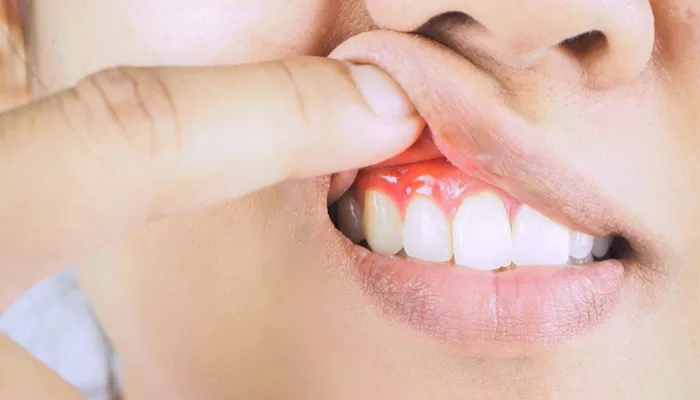Gum disease, also known as periodontal disease, is a prevalent oral health issue that affects millions of people worldwide. It begins with inflammation of the gums due to bacterial plaque buildup and can progress to more severe conditions if left untreated. Understanding the symptoms of gum disease is crucial for early detection and effective treatment. This article will explore the various symptoms associated with gum disease, its stages, and the importance of maintaining good oral hygiene.
What Causes Gum Disease?
Gum disease primarily results from poor oral hygiene practices that allow plaque—a sticky film of bacteria—to build up on teeth and harden into tartar. This accumulation leads to inflammation of the gums, known as gingivitis, which can progress to periodontitis if not addressed. Several factors can exacerbate gum disease, including:
Smoking: Tobacco use significantly increases the risk of gum disease.
Diabetes: Uncontrolled diabetes can impair blood flow to the gums and hinder healing.
Hormonal Changes: Fluctuations in hormones, such as during pregnancy or menopause, can make gums more sensitive.
Genetics: Some individuals may be genetically predisposed to gum disease.
Certain Medications: Some drugs can reduce saliva flow, increasing the risk of gum disease.
Stages of Gum Disease
Gum disease progresses through several stages, each characterized by specific symptoms:
1. Gingivitis
This is the earliest stage of gum disease and is often reversible with proper dental care. Symptoms include:
Red and Swollen Gums: Healthy gums should be pink and firm; inflamed gums appear red and swollen.
Bleeding Gums: Gums may bleed during brushing or flossing.
Bad Breath: Persistent bad breath (halitosis) may occur due to bacterial buildup.
2. Mild Periodontitis
If gingivitis is left untreated, it can progress to mild periodontitis. Symptoms may include:
Pocket Formation: Gums begin to pull away from teeth, creating pockets that trap food and bacteria.
Increased Bleeding: Bleeding may become more frequent during oral hygiene practices.
3. Moderate Periodontitis
At this stage, the condition becomes more serious:
Bone Loss: The bone supporting the teeth begins to deteriorate.
Painful Gums: Gums may become painful or tender to touch.
Pus Formation: Pus may appear between teeth and gums, indicating infection.
4. Advanced Periodontitis
The most severe stage of gum disease can lead to significant complications:
Severe Bone Loss: Extensive loss of bone structure supporting teeth.
Loose Teeth: Teeth may become loose or shift position due to loss of support.
Tooth Loss: In severe cases, teeth may fall out or require extraction.
Common Symptoms of Gum Disease
Recognizing the symptoms of gum disease early is essential for effective treatment. Here are some common signs to watch for:
Red and Swollen Gums
One of the first indicators of gum disease is the appearance of red, swollen gums. Healthy gums should be pale pink and firm; any deviation from this norm warrants attention.
Bleeding During Brushing or Flossing
Gums that bleed easily when brushing or flossing are a clear sign of inflammation. This symptom often signifies the presence of gingivitis.
Persistent Bad Breath
Chronic bad breath that does not improve with regular brushing and flossing may indicate an underlying gum infection.
Gum Recession
As gum disease progresses, gums may recede from teeth, making them appear longer. This recession exposes sensitive tooth roots and can lead to increased discomfort.
Loose or Shifting Teeth
Teeth that feel loose or shift position are a sign that the supporting bone structure is compromised. This symptom typically occurs in advanced stages of gum disease.
Pus Between Teeth and Gums
The presence of pus indicates an active infection in the gums. This symptom requires immediate dental attention.
Changes in Bite Alignment
Changes in how your teeth fit together when biting or chewing may occur as a result of shifting teeth due to periodontal damage.
Importance of Early Detection
Early detection and treatment of gum disease are critical for preventing its progression. Regular dental check-ups allow for professional cleanings that remove plaque and tartar buildup before they cause significant damage. During these visits, dentists can identify early signs of gum disease and recommend appropriate interventions.
Home Care Practices
Maintaining good oral hygiene at home is essential for preventing gum disease:
Brush Twice Daily: Use fluoride toothpaste and a soft-bristled toothbrush to clean your teeth thoroughly.
Floss Daily: Flossing removes plaque from between teeth where a toothbrush cannot reach.
Use Antimicrobial Mouthwash: Rinsing with an antimicrobial mouthwash can help reduce bacteria in the mouth.
Regular Dental Visits: Schedule dental check-ups every six months for professional cleanings and evaluations.
Conclusion
Gum disease is a serious condition that can lead to tooth loss and other health complications if not addressed promptly.
Understanding its symptoms—such as red swollen gums, bleeding during brushing, persistent bad breath, gum recession, loose teeth, pus formation, and changes in bite alignment—can empower individuals to seek timely dental care. By practicing good oral hygiene and attending regular dental check-ups, one can effectively prevent gum disease and maintain optimal oral health.

